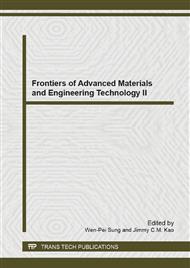p.3
p.7
p.12
p.18
p.23
p.27
p.32
p.36
p.40
Effect of High Temperature Stays Process on Ultra-Low-Carbon Bainitic Steel without Nb, Ti and other Metal Compounds Forming Elements
Abstract:
The influence of high temperature stays process on the directly cooling experimental ULCB steel had been investigated. We found that the process of high temperature stays had effect on the ULCB steels phase transformation point, and made the CCT curve move to top left. When the cooling rate increased, the formation and growth of granular bainite would be inhibited, but the formation and growth of bunchy bainite would be promoted. And the high temperature stays process had a weaker effect on the specimens structure when specimens were cooled slowly. Key Words: high temperature stays; cooling rate; bunchy bainite; granular bainite
Info:
Periodical:
Pages:
23-26
Citation:
Online since:
April 2014
Authors:
Keywords:
Price:
Сopyright:
© 2014 Trans Tech Publications Ltd. All Rights Reserved
Share:
Citation:


